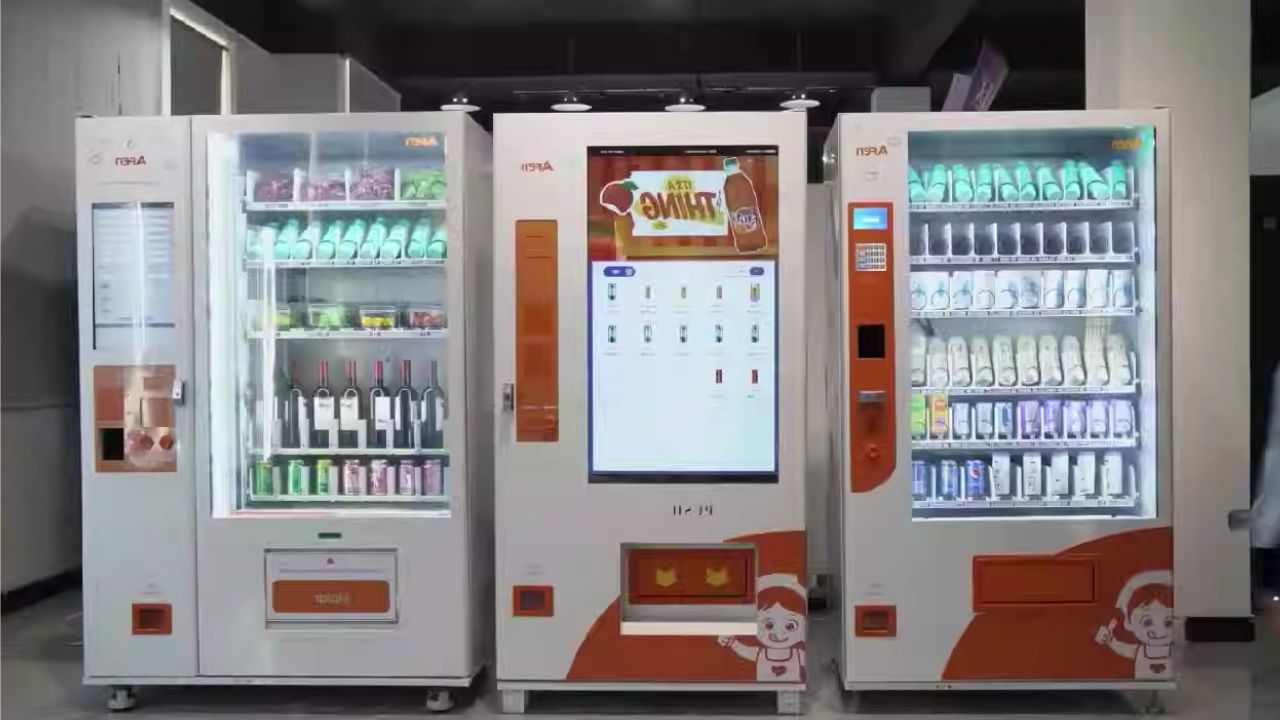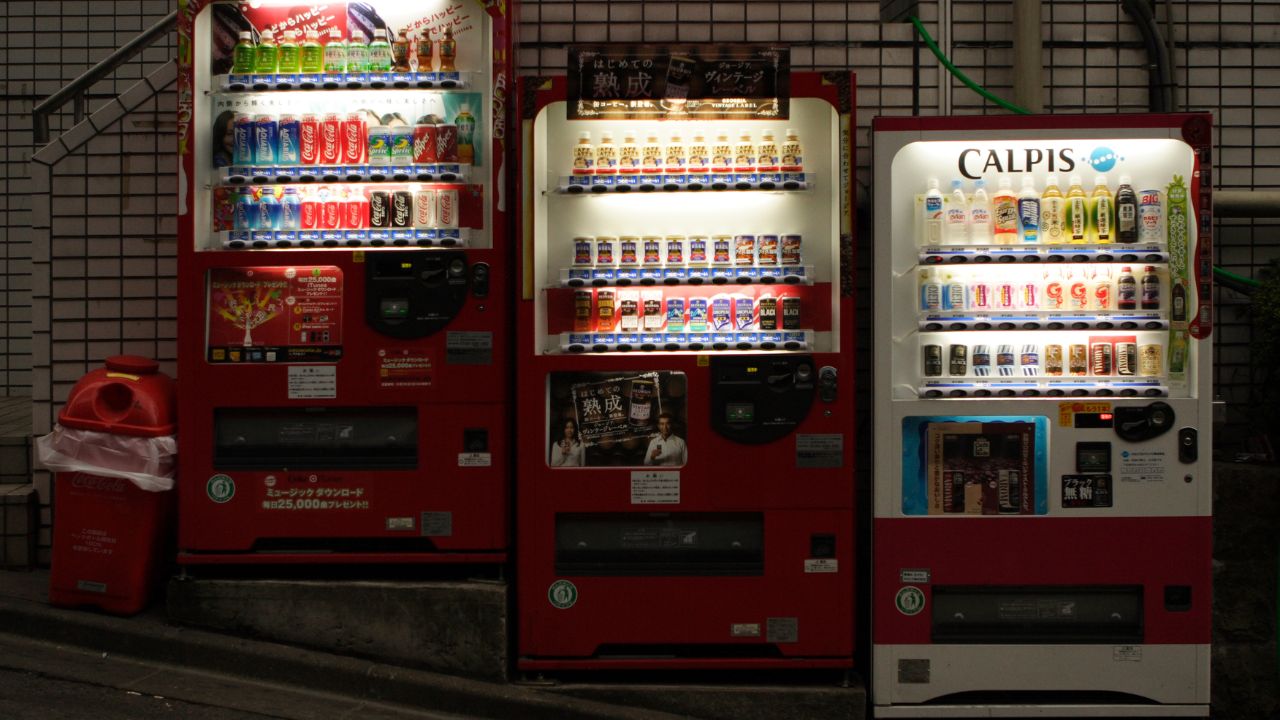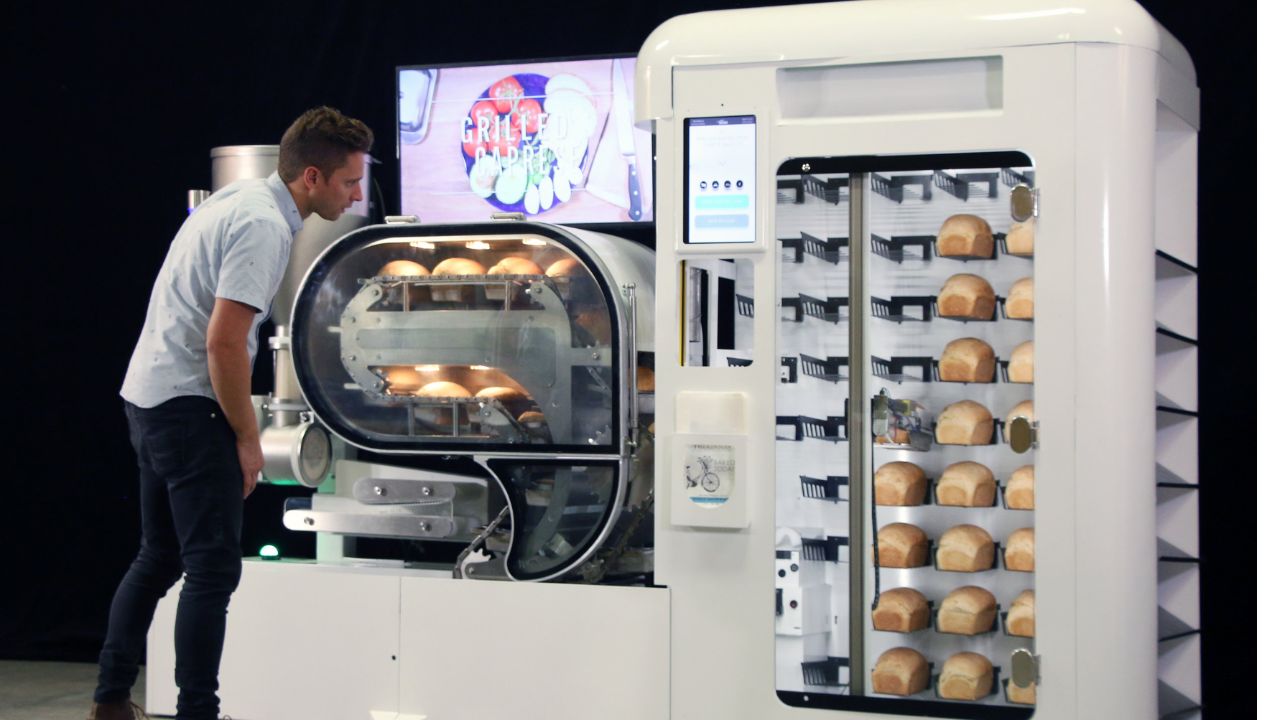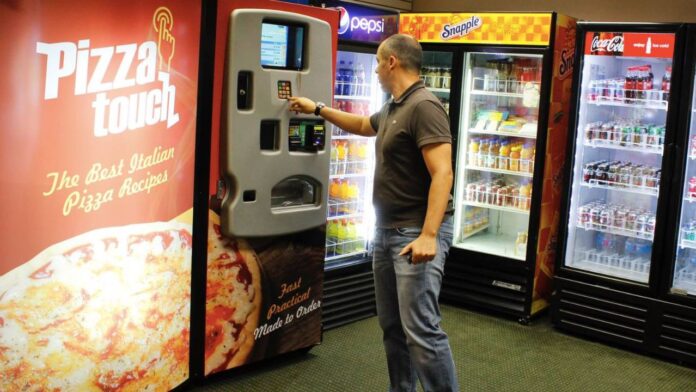If you’ve ever approached a vending machine with just a few coins, you’ve likely wondered: Does the vending machine give change? Vending machines have become integral to modern convenience, offering quick access to snacks, drinks, and various other products. However, the ability of a vending machine to provide change can significantly impact its usability and customer satisfaction. In this introduction, we’ll delve into the world of vending machines to explore the intricacies of their change-giving capabilities.
From traditional machines to modern marvels equipped with advanced technology, we’ll uncover how these automated dispensers manage transactions and address the common concerns surrounding change availability. So, if you’re curious about whether that vending machine around the corner can spare some change, stick around as we unravel the mystery behind its operations.
The Mechanics of Vending Machines
The mechanics of vending machines are fascinatingly intricate, designed to handle transactions while ensuring user convenience seamlessly. At their core, these machines operate on gears, levers, and sensors orchestrated to dispense products in exchange for payment. The machine’s internal mechanisms emerge when a customer selects an item and inserts coins or bills. Sensors detect the currency, verifying its authenticity and determining the appropriate amount. Precise mechanics then release the selected goods, often with a satisfying mechanical whirr.
Modern vending machines employ advanced technologies such as digital displays and cashless payment systems, further enhancing their efficiency and user experience. Understanding the mechanics behind these automated vendors sheds light on the ingenuity and engineering prowess involved in their creation.

Deciphering Vending Machine Payment Systems
Deciphering vending machine payment systems reveals the evolution of convenience in commerce. Traditional machines primarily accepted coins, requiring users to insert exact changes for their desired item. However, modern vending machines have diversified their payment options, accommodating various forms of currency, including bills, credit/debit cards, and mobile payments.
These sophisticated systems utilize advanced technology, such as optical scanners and magnetic stripe readers, to process transactions swiftly and securely. Some vending machines even offer contactless payment methods, tapping into the growing trend of digital transactions. Deciphering these payment systems illuminates the seamless integration of innovation and convenience, empowering users with greater flexibility and accessibility. As vending machines continue to evolve, understanding their payment mechanisms’ intricacies becomes essential for operators and consumers alike.
The Role of Change in Vending Transactions
Does the vending machine give change, influencing both customer satisfaction and operational efficiency? For consumers, having access to change ensures flexibility and convenience when making purchases from vending machines. It eliminates the need for exact coinage and accommodates varying payment preferences. Moreover, changing availability encourages repeat business and fosters positive experiences with vending machines.
From an operational standpoint, vending machines equipped to provide change minimize the risk of transaction failures and ensure smooth user transactions. They enhance the accessibility of vending services, catering to a wider audience and maximizing revenue potential. Recognizing the significance of the change in vending transactions underscores the importance of maintaining well-stocked and functional machines and optimizing the overall vending experience for all stakeholders involved.
Evaluating the Need for Change in Vending Transactions
Evaluating the need for change in vending transactions requires a nuanced understanding of consumer preferences and operational considerations. For consumers, the availability of change simplifies the purchasing process, eliminating the inconvenience of carrying exact coinage. It enhances convenience and encourages spontaneous purchases, contributing to overall customer satisfaction. From an operational perspective, analyzing the demand for change helps vending operators optimize machine functionality and inventory management.
Machines equipped to dispense change efficiently reduce the risk of transaction errors and ensure seamless service delivery. Additionally, evaluating the need for change allows operators to adapt to evolving payment trends, such as the increasing popularity of cashless transactions. Vending operators may effectively cater to the needs of their clients while optimizing income potential and operational efficiency by becoming aware of market dynamics and customer preferences.

The Economics of Change Dispensation in Vending
The economics of change dispensation in vending is a balancing act between cost, convenience, and customer satisfaction. While providing change incurs expenses for stocking and maintenance, it plays a crucial role in enhancing user experience and driving sales. Vending operators must weigh the costs of maintaining change inventory against the potential benefits of increased sales volume and customer retention.
Moreover, efficient change dispensation can mitigate the risk of transaction failures and reduce operational disruptions. Understanding the economics of change dispensation enables operators to optimize their vending business model, aligning inventory management practices with revenue goals and consumer demand. By striking the right balance between cost-effectiveness and customer convenience, vending operators can maximize profitability while delivering value to their clientele.
Changes in Vending Machines
Addressing consumer expectations regarding vending machine change is critical to guaranteeing a satisfying user experience and promoting customer loyalty. These days’ customers anticipate easy and adaptable payment alternatives from vending machines, such as getting change for their purchases. Please meet these expectations to avoid frustration and dissatisfaction, potentially leading to lost sales and negative feedback.
Vending operators must prioritize change availability to align with consumer preferences and market demands. Implementing reliable change dispensation mechanisms enhances trust and confidence in vending machines, encouraging repeat business and word-of-mouth recommendations. Vending operators can stand out in a crowded market and develop enduring clientele by anticipating and responding to change-related customer expectations.
The Technology Behind Change Dispensing
The technology behind change dispensing in vending machines has evolved significantly, revolutionizing how transactions are processed and enhancing user convenience. Traditional vending machines relied on mechanical coin mechanisms to dispense change, using simple mechanisms such as coin slots and levers. However, modern vending machines leverage advanced technologies to automate and optimize the change dispensation process.
Optical sensors, magnetic stripe readers, and electronic coin validators are sophisticated components integrated into contemporary vending machines, enabling accurate and efficient transaction processing. Some machines even offer cashless payment options, utilizing NFC and RFID technology to facilitate seamless transactions without needing physical currency. Understanding the technology behind change dispensing empowers vending operators to select and maintain machines that meet the evolving needs of their customers while maximizing operational efficiency.
Managing Change Supply in Vending Operations
Managing change supply in vending operations requires meticulous planning and inventory management to ensure uninterrupted service and customer satisfaction. Vending operators must maintain an adequate supply of coins and bills to facilitate transactions and provide change when needed. This involves regularly replenishing change reserves based on transaction volume and demand patterns. Additionally, operators may implement automated monitoring systems to track inventory levels and forecast future needs accurately.
Proactive maintenance of change dispensation mechanisms also plays a crucial role in preventing downtime and optimizing operational efficiency. By effectively managing change supply, vending operators can minimize transaction errors, enhance user experience, and maximize revenue potential. Moreover, maintaining a reliable change supply demonstrates a commitment to customer service, fostering trust and loyalty among vending machine users.

Examining the Role of Coin Transactions
Examining the role of coins in vending machine transactions sheds light on their enduring significance in modern commerce. Coins serve as a universally recognized form of currency, facilitating transactions with simplicity and efficiency. In vending machines, coins play a vital role in giving customers flexibility and convenience when purchasing. They eliminate the need for exact change, accommodating various denominations and reducing transactional friction.
Furthermore, coins are durable and easily recognizable, making them an ideal medium for small-scale transactions typically associated with vending machines. Understanding the role of coins in vending machine transactions underscores their enduring relevance in an increasingly digital world. As technology advances, coins remain a steadfast cornerstone of financial transactions, bridging the gap between convenience and tradition in everyday commerce.
Investigating Common Change Dispensation Problems
Investigating common change dispensation problems reveals vending operators’ and consumers’ challenges in ensuring seamless transactions. One prevalent issue is the need for more change, leading to frustration among customers who cannot receive proper change for their purchases. This problem often arises due to inadequate inventory management or mechanical malfunctions within the vending machine. Another common issue is the machine’s validation mechanisms’ rejection of coins or bills, resulting in failed transactions and user dissatisfaction.
Additionally, vandalism or tampering can disrupt the proper functioning of change dispensation mechanisms, causing operational disruptions and financial losses for vending operators. Vending operators may increase the dependability and effectiveness of their machines, raising customer satisfaction levels and optimizing income potential by recognizing and resolving these frequent issues.
Balancing Convenience and Transaction Precision
Balancing convenience and transaction precision is a delicate art in vending machines, where user satisfaction hinges on seamless transactions. While convenience dictates the need for quick and effortless purchases, transaction precision ensures accuracy and reliability in dispensing products and change. Striking this balance requires vending operators to optimize machine functionality, ensuring smooth transaction processes without compromising accuracy.
This involves implementing advanced payment systems capable of handling various forms of currency while maintaining robust change dispensation mechanisms. Moreover, regular maintenance and monitoring are essential to prevent technical glitches and minimize downtime. Vending operators can create a positive user experience by prioritizing convenience and transaction precision, fostering customer loyalty, and maximizing revenue generation. In doing so, they navigate the fine line between efficiency and customer satisfaction, ultimately elevating the vending machine industry as a whole.
The Limits of Change Dispensation in Vending
The limits of change dispensation in vending machines are essential for operators and consumers to manage expectations effectively. While vending machines are designed to provide change for transactions, they have inherent limitations based on factors such as machine capacity and inventory management. Excessive demand for change or insufficient coin reserves can lead to temporary shortages, impacting the machine’s ability to dispense change accurately.
Additionally, technical issues or malfunctions may further restrict the machine’s capacity to provide change consistently. By recognizing these limitations, vending operators can implement strategies to mitigate potential challenges, such as regularly monitoring inventory levels and optimizing machine maintenance. Moreover, consumers can make informed decisions when using vending machines, understanding that occasional limitations in change dispensation may occur due to factors beyond the operator’s control.
Conclusion
The question “Does the vending machine give change?” encapsulates a broader discussion surrounding the intricacies of vending machine operations and consumer expectations. Throughout this exploration, we’ve delved into the mechanics, technology, economics, and customer-centric aspects of change dispensation in vending.
Change enhances user experience, ensures transactional convenience, and fosters customer satisfaction. However, managing change supply, addressing common problems, and understanding the limits of change dispensation are crucial considerations for both vending operators and consumers. As vending machines evolve with technological advancements and payment systems, balancing convenience and precision remains paramount.
Ultimately, the ability of vending machines to provide change effectively reflects their adaptability to meet the evolving needs of consumers in an increasingly digitized marketplace. By navigating these complexities and embracing innovation, vending operators can elevate the overall vending experience while satisfying customer expectations.
FAQ
Are all vending machines equipped to give change?
No, not all vending machines provide change. It depends on the type of machine and its capabilities.
How can I tell if a vending machine gives change before making a purchase?
Some vending machines may have signage indicating whether they provide change. Alternatively, you can ask the vending machine operator or check for information on the machine’s interface.
What should I do if a vending machine doesn’t give change for my purchase?
If this happens to you, you can contact the vending machine operator or ask customer support for help to fix the problem.
Are there any alternatives to using cash for vending machine transactions?
Many modern vending machines accept cashless payment methods such as credit/debit cards, mobile payments, or prepaid vending cards.
Can vending machines provide change for large bills?
It depends on the vending machine’s configuration and available change reserves. Some machines may be capable of providing change for larger bills, while others may have limitations.

